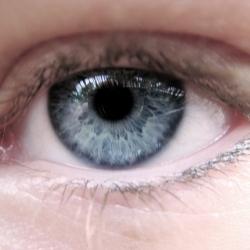
Even if you’ve never used Tobii’s new eye tracking computer, it still feels like you have.
Seconds into using the device, the whole experience comes together: Glance at an onscreen object, click, and it opens. The entire process is so surprisingly fluid that you barely realize you’re not using a mouse.
Carl Korobkin, Tobii’s business development vice president, says that this experience exposes one of the fundamental realities about how we interact with devices today: It’s all really inefficient.
“With smartphones now, you’re touching the screen, but you’re already touching the screen with your eyes. Why reach out and touch something if I’ve already looked at it? You really don’t need that mechanical process anymore,” he said earlier today.
It’s tough to argue with that logic. Like touch input and voice, eye-tracking breaks down the abstraction of interfaces between you and your devices. Why use a mouse — or even a touchscreen– when you can just look at what you want to interact with? Why type your search queries when you can say them?
(Tobii, however, isn’t ditching the idea of touch entirely: Its laptop prototype features a pressure-sensitive touchpad developed by Synaptics, which replaces the kind of clickable touchpads found in current laptops.)
While eye-tracking has been around for years, its underlying technology is finally getting small enough that manufacturers can implement it in smaller devices — including laptops, tablets, and, yes, smartphones. Two years ago, none of this would have been possible, but by next year, it’ll be everywhere.
